Strain Rate and Porosity Effect on Mechanical Characteristics and Depolarization of Porous Poled PZT95/5 Ceramics
Abstract
1. Introduction
2. Experimental
2.1. Sample Preparation
2.2. Testing Method
3. Results and Discussion
3.1. Stress–Strain Curves and Depolarization Characteristics at the Intermediate Strain Rate
3.2. Different Porosity Sample Tests at Low and Intermediate Strain Rates
3.3. Strain Rate Effect
4. Conclusions
Author Contributions
Funding
Conflicts of Interest
References
- Tuttle, B.A.; Yang, P.; Gieske, J.H.; Scoield, T.W.; Zeuch, D.H.; Olson, W.R. Pressure-induced phase transformation of controlled-porosity Pb(Zr0.95Ti0.05)O3 ceramics. J. Am. Ceram. Soc. 2001, 84, 1260–1264. [Google Scholar] [CrossRef]
- Shkuratov, S.I.; Baird, J.; Antipov, A.G.; Chase, J.B.; Hackenberger, W. Stress-induced depolarization of single-layer PZT95/5 ferrroelectric films. Appl. Phys. Lett. 2019, 114, 172902. [Google Scholar] [CrossRef]
- Dong, W.D.; Valadez, J.C.; Gallagher, J.A.; Jo, H.R.R. Pressure, temperature, and electric field dependence of phase transformations in niobium modified 95/5 lead zirconate titanate. J. Appl. Phys. 2015, 117, 212. [Google Scholar] [CrossRef]
- Fritz, I.; Keck, J.D. Pressure-temperature phase diagrams for several modified lead zirconate ceramics. J. Phys. Chem. Solids. 1978, 39, 1163–1167. [Google Scholar] [CrossRef]
- Lysne, P.C. Dielectric properties of shock wave compressed PZT95/5. J. Appl. Phys. 1977, 48, 1020–1023. [Google Scholar] [CrossRef]
- Ujma, Z.; Hańderek, J. Peculiarities of the pyroelectric effect and of the dielectric properties in Bi-doped Pb(Zr0.95Ti0.05)O3 ceramics. J. Eur. Ceram. Soc. 2003, 23, 203–212. [Google Scholar] [CrossRef]
- Cordero, F.; Buixaderas, E.; Galassi, C. Damage from coexistence of ferroelectric and antiferroelectric domains and clustering of O vacancies in PZT: An elastic and raman study. Materials 2019, 75, 957. [Google Scholar] [CrossRef]
- Dungan, R.H.; Storz, L.J. Relation between Chemical, Mechanical, and Electrical Properties of Nb2O5-Modified 95 Mol% PbZrO3-5 Mol% PbTiO3. J. Am. Ceram. Soc. 1985, 68, 530–533. [Google Scholar] [CrossRef]
- Setchell, R.E. Shock wave compression of the ferroelectric ceramic Pb0.99(Zr0.95Ti0.05)0.98 Nb0.02O3: Microstructural effects. J. Appl. Phys. 2007, 101, 053525. [Google Scholar] [CrossRef]
- Lan, C.F.; Nie, H.C.; Chen, X.F.; Wang, J.X.; Wang, G.S.; Dong, X.L.; Liu, Y.S.; He, H.L. Effects of poling state and pores on fracture toughness of Pb(Zr0.95Ti0.05)O3 ferroelectric ceramics. Adv. Appl. Ceram. 2013, 112, 306–310. [Google Scholar] [CrossRef]
- Zeng, T.; Dong, X.L.; Mao, C.L.; Zhou, Z.Y.; Yang, H. Effects of pore shape and porosity on the properties of porous PZT 95/5 ceramics. J. Eur. Ceram. Soc. 2007, 27, 2025–2029. [Google Scholar] [CrossRef]
- Setchell, R.E. Shock wave compression of the ferroelectric ceramic Pb0.99(Zr0.95Ti0.05)0.98 Nb0.02O3: Depoling currents. J. Appl. Phys. 2005, 97, 013507. [Google Scholar] [CrossRef]
- Feng, N.B.; Nie, H.C.; Chen, X.F.; Wang, G.S.; Dong, X.L. Depoling of porous Pb0.99(Zr0.95 Ti0.05)0.98Nb0.02O3 ferroelectric ceramics under shock wave load. Curr. Appl. Phys. 2010, 10, 1387–1390. [Google Scholar] [CrossRef]
- Jiang, Z.; Wang, Y.; Nie, H.; Liu, Y. Influence of porosity on nonlinear mechanical properties of unpoled porous Pb(Zr0.95Ti0.05)O3 ceramics under uniaxial compression. Mech. Mater. 2017, 104, 139–144. [Google Scholar] [CrossRef]
- Acharya, S.; Bysakh, A.; Parameswaran, V.; Mukhopadhyay, A.K. Deformation and failure of alumina under high strain rate compressive loading. Ceram. Int. 2015, 41, 6793–6801. [Google Scholar] [CrossRef]
- Hogan, J.D.; Farbaniec, L.; Sano, T.; Shaeffer, M. The effects of defects on the uniaxial comrpessive strength and failure of an advanced ceramic. Acta Mater. 2016, 102, 263–272. [Google Scholar] [CrossRef]
- Wang, Z.; Li, R.; Song, W. Dynamic failure and inelastic deformation behavior of SiC ceramic under uniaxial compression. Ceram. Int. 2020, 46, 612–617. [Google Scholar] [CrossRef]
- Sutton, M.A.; Orteu, J.; Schreier, H.W. Image Correlation for Shape, Motion, and Deformation Measurements; Academic Press: New York, NY, USA; Springer: New York, NY, USA, 2009. [Google Scholar]
- Pierron, F.; Sutton, M.A.; Tiwari, V. Ultra high speed DIC and virtual fields method analysis of a three point bending impact test on an aluminum bar. Exp. Mech. 2011, 51, 537–563. [Google Scholar] [CrossRef]
- Liu, J.G.; Saletti, D.; Pattofatto, S.; Zhao, H. Impact testing of polymeric foam using Hopkinson bars and digital image analysis. Polym. Test. 2014, 36, 101–109. [Google Scholar] [CrossRef]
- Guo, Y.B.; Gao, G.F.; Jing, L.; Shim, V.P.W. Quasi-static and dynamic splitting of high-strength concretes-tensile stress-strian response and effects of strain rate. Int. J. Impact. Eng. 2019, 125, 188–211. [Google Scholar] [CrossRef]
- Chen, W.; Song, B. Split Hopkinson(Kolsky) Bar; Springer: Berlin, Germany, 2001. [Google Scholar]
- Lee, O.S.; Cho, K.S.; Kim, S.H.; Han, Y.H. Dynamic deformation behavior of soft material using shpb technique and pulse shaper. Int. J. Mod. Phys. B 2006, 20, 3751–3756. [Google Scholar] [CrossRef]
- Panowica, R.; Janiszewski, J.; Kochanowski, K. The influence of non-axisymmetric pulse shaper position on SHPB experiment data. J. Theor. App. Mech. 2018, 56, 874–886. [Google Scholar]
- Panowica, R.; Janiszewski, J.; Kochanowski, K. Influence of pulse shaper geometry on wave pulses in SHPB experiments. J. Theor. App. Mechl. 2018, 56, 1217–1221. [Google Scholar] [CrossRef]
- Lu, F.; Lin, Y.; Wang, X.; Lu, L. A theoretical analysis about the influence of interfacial friction in SHPB tests. Int. J. Impact. Eng. 2015, 79, 95–101. [Google Scholar] [CrossRef]
- Mehling, V.; Tsakmakis, C.; Gross, D. Phenomenological model for the macroscopical material behavior of ferroelectric ceramics. J. Mech. Phys. Solids 2007, 55, 2106–2140. [Google Scholar] [CrossRef]
- Zeng, T.; Dong, X.L.; He, H.L.; Yao, C.H. Pressure-induced ferroelectric to antiferroelectric phase transformation in porous PZT95/5 ceramics. Phys. Stat. Solidi 2007, 304, 1216–1220. [Google Scholar] [CrossRef]
- Li, Q.; Meng, H. About the dynamic strength enhancement of concrete-like materials in a split Hopkinson pressure bar test. Int. J. Solids Struct. 2003, 40, 343–360. [Google Scholar] [CrossRef]
- Forrestal, M.J.; Wright, T.W.; Chen, W. The effect of radial inertia on brittle samples during the split Hopkinson pressure bar test. Int. J. Impact. Eng. 2007, 34, 405–411. [Google Scholar] [CrossRef]
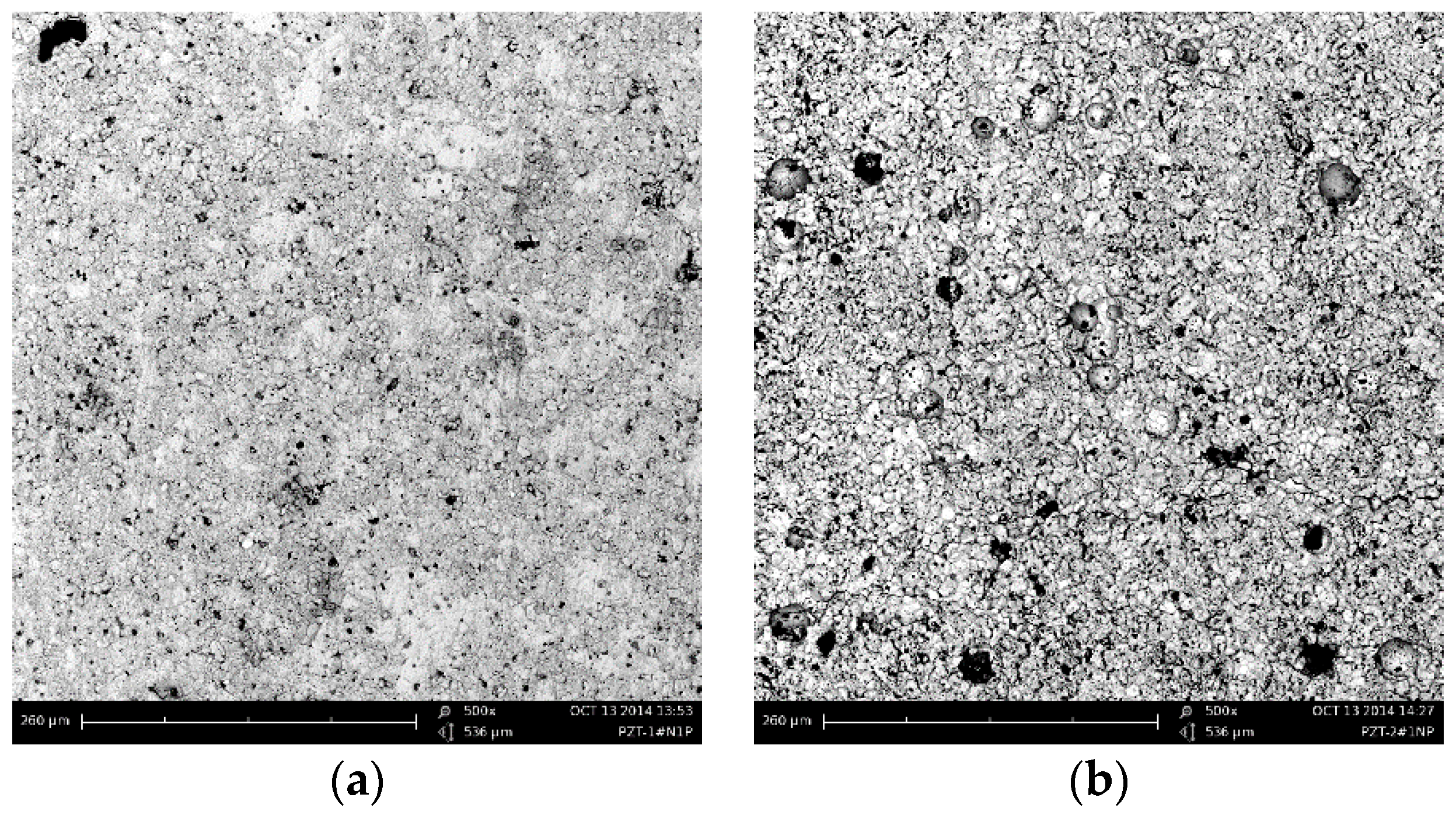
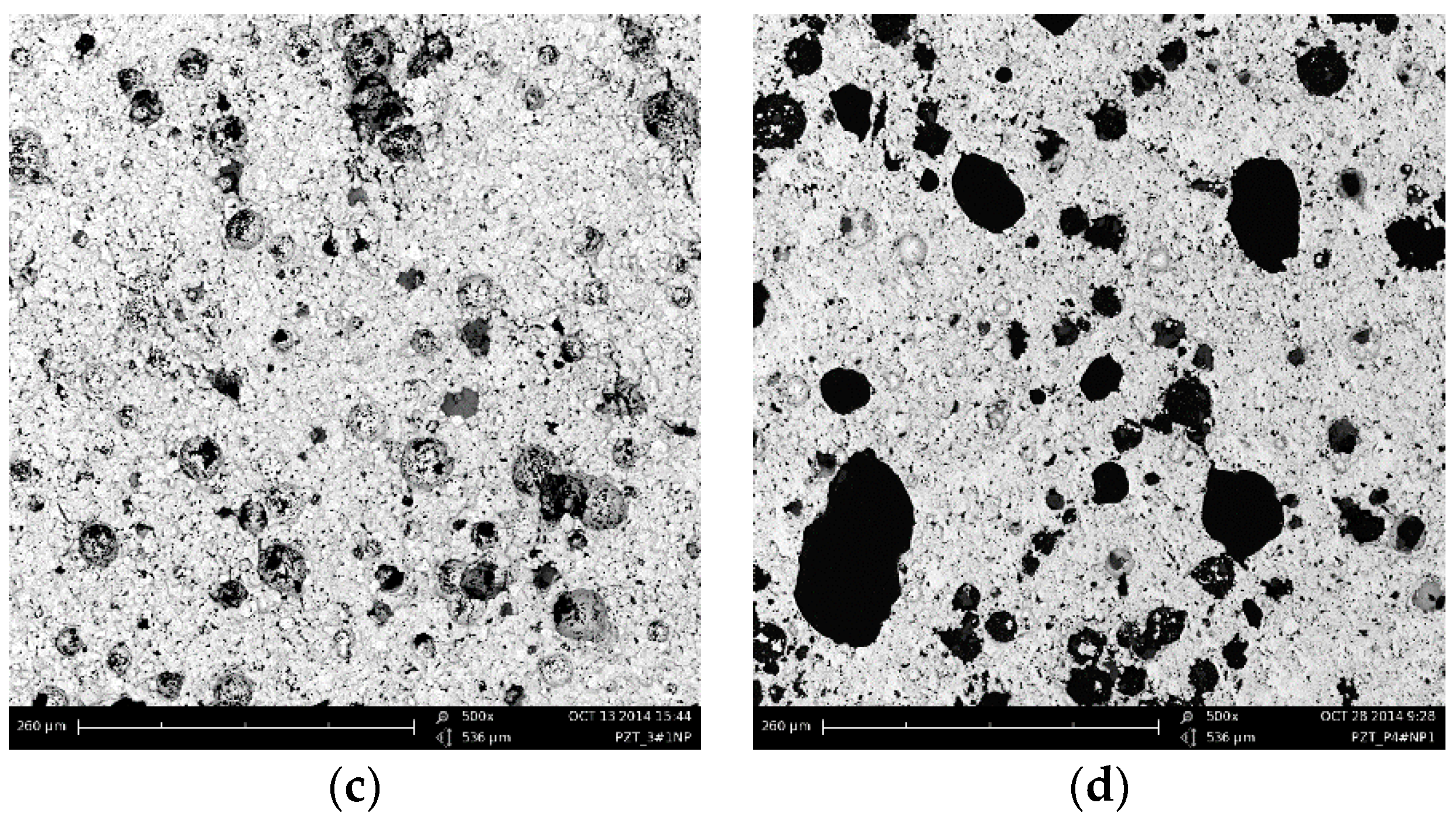
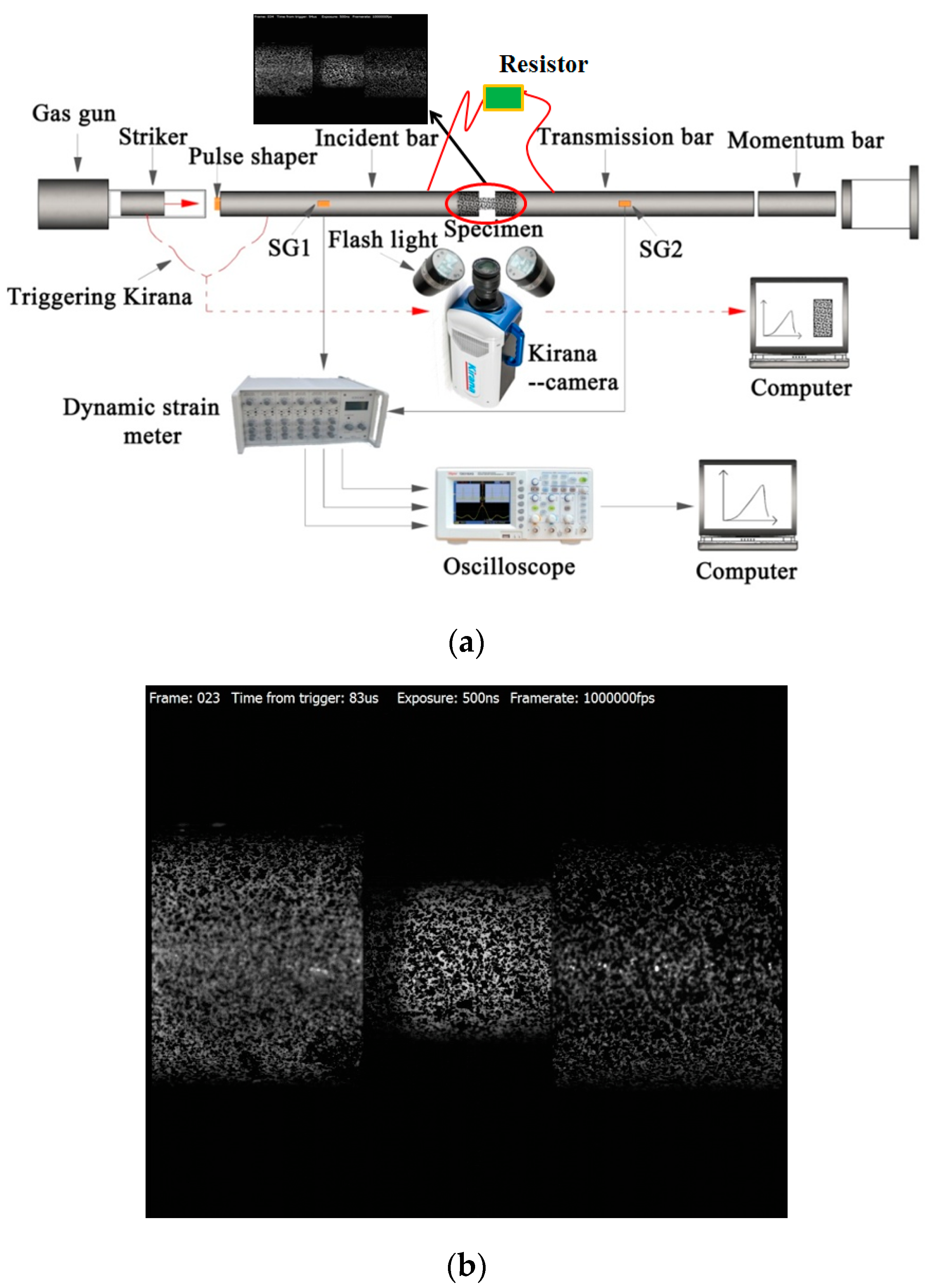
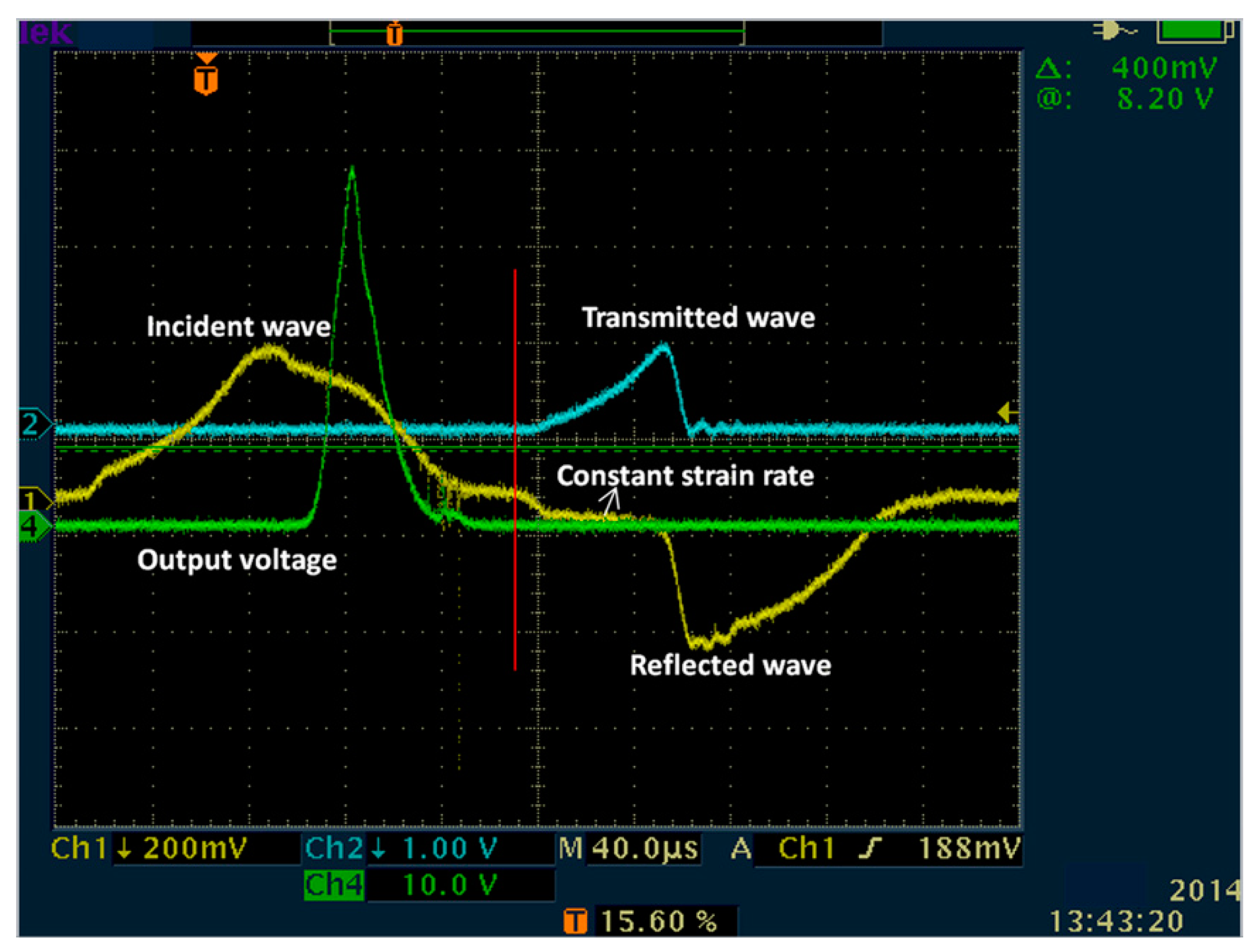
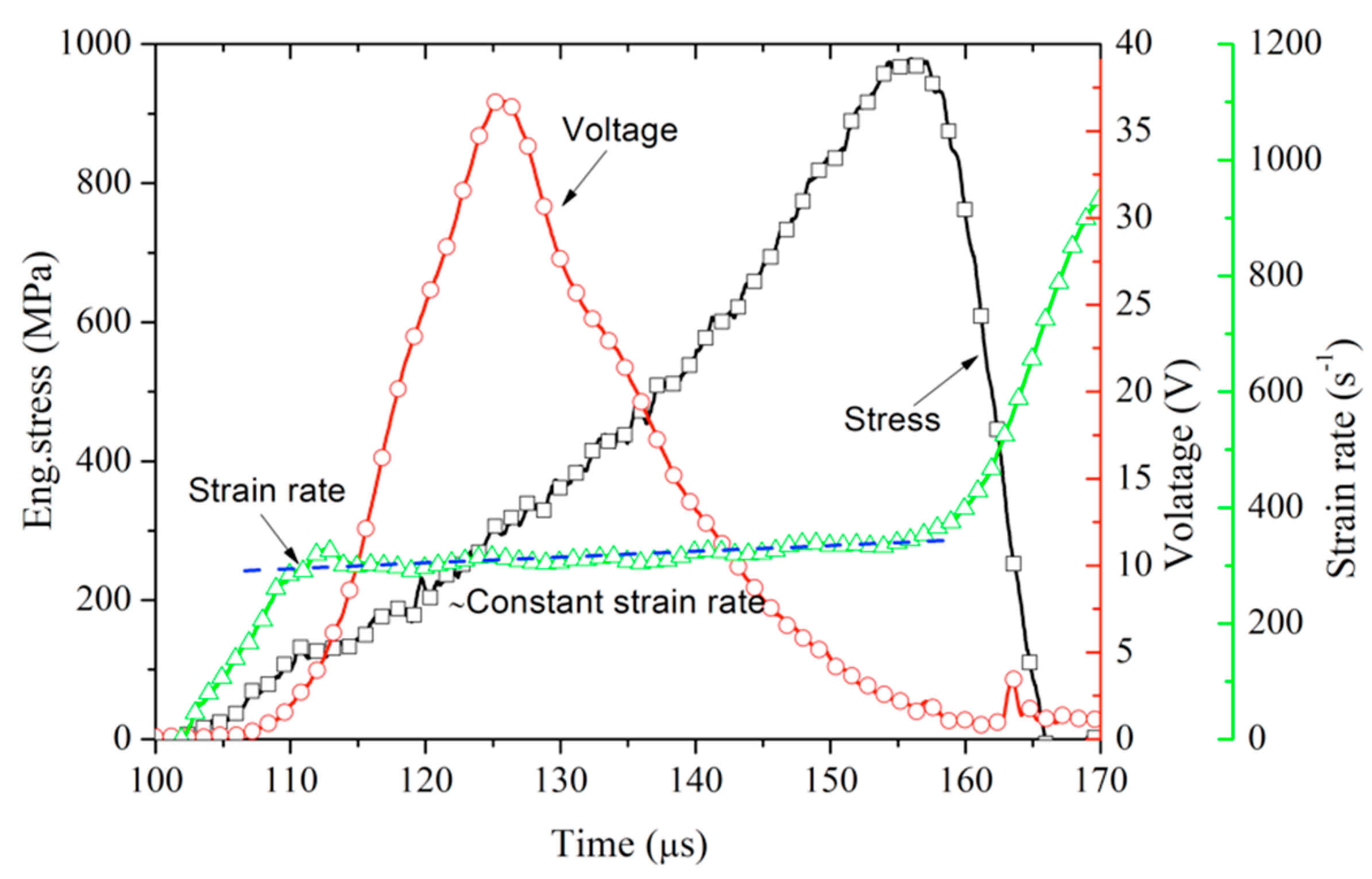
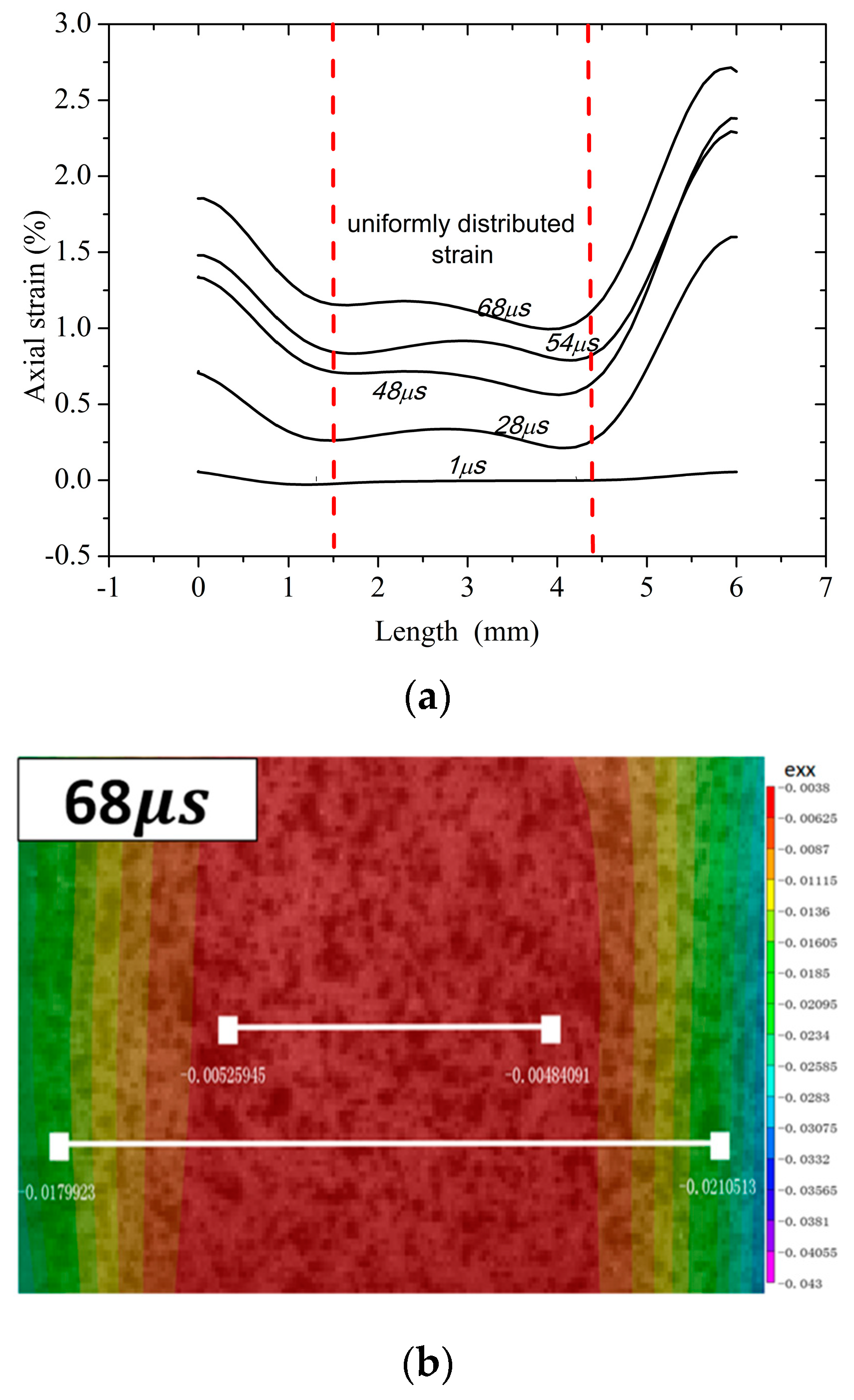
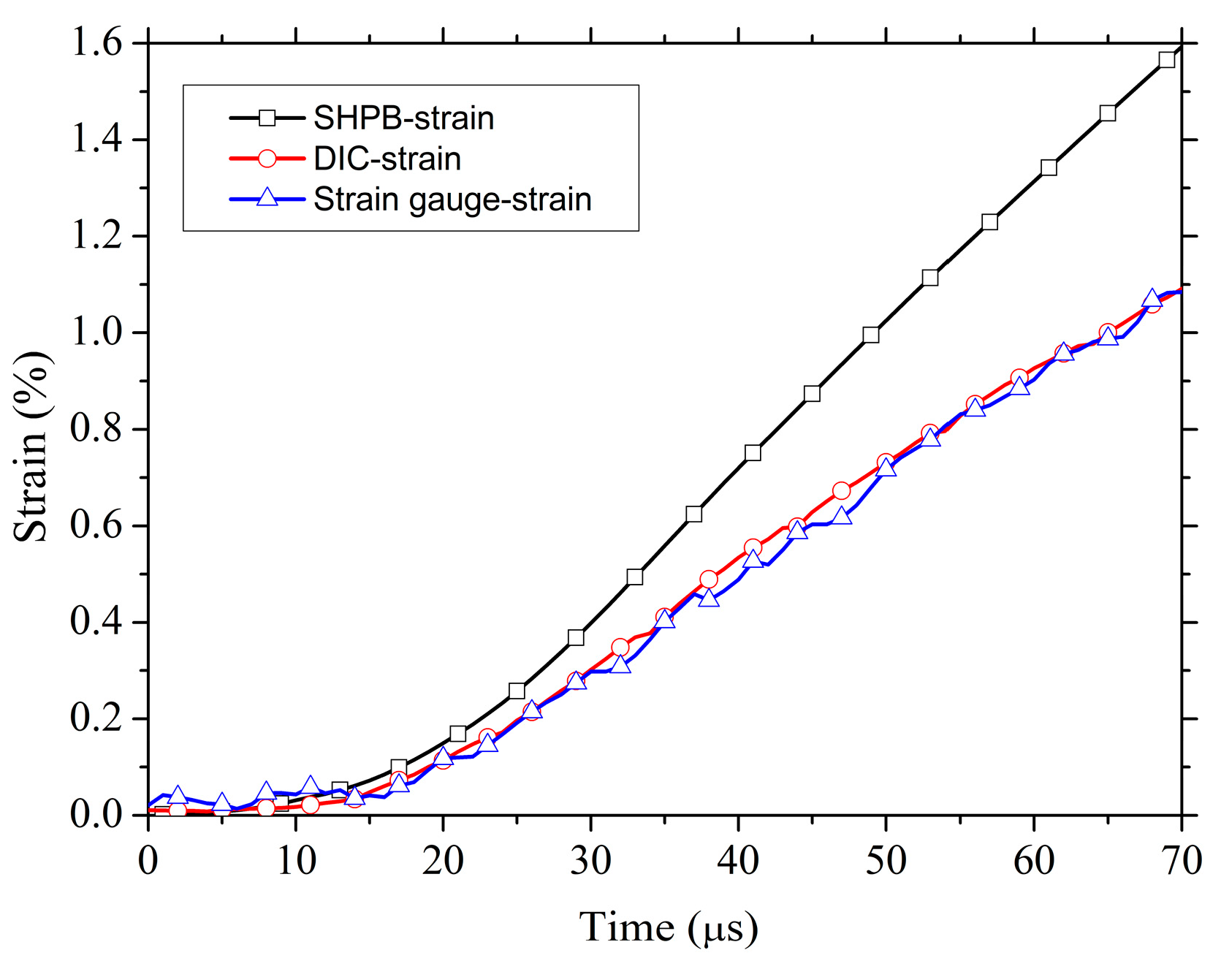

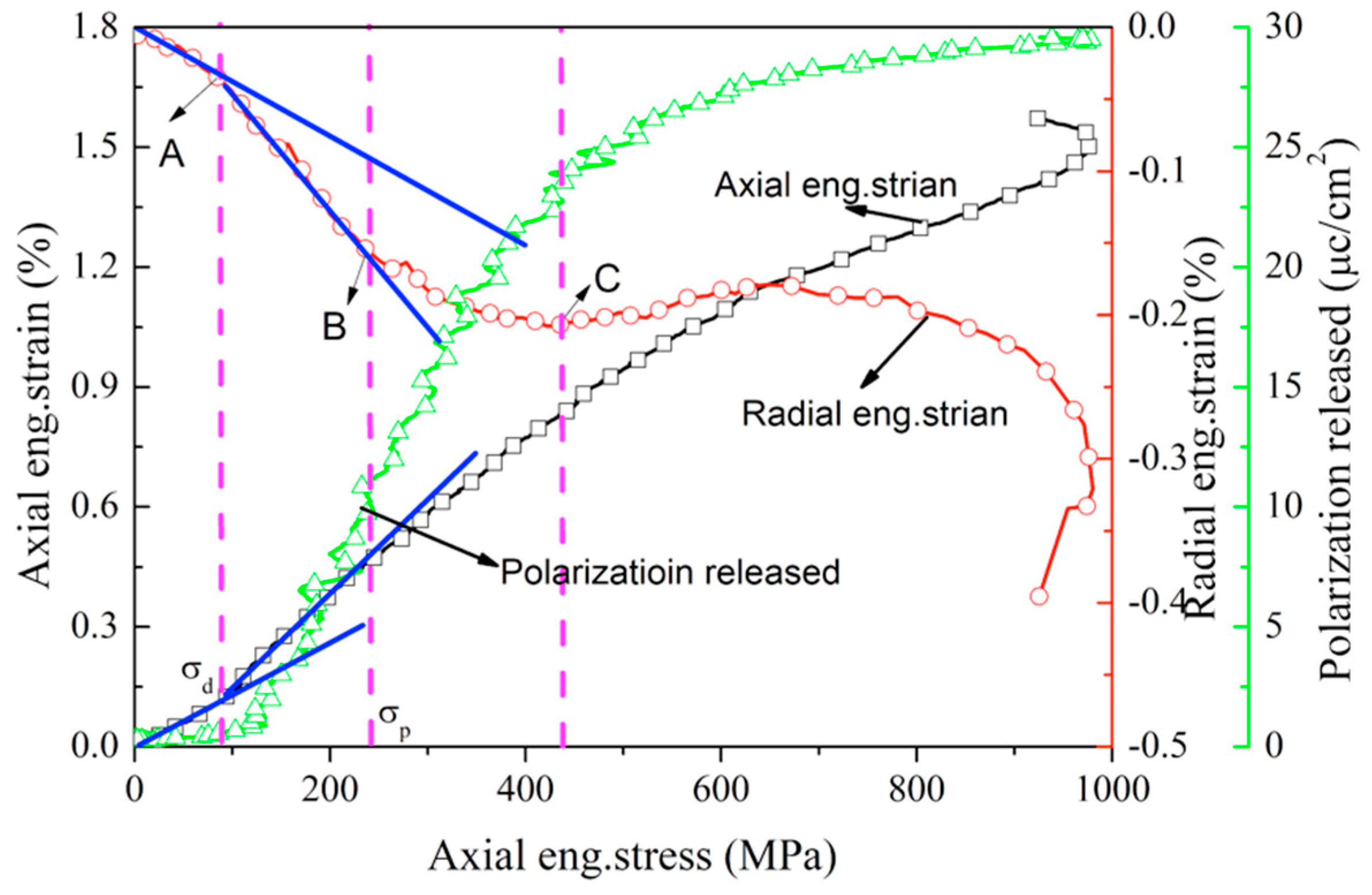
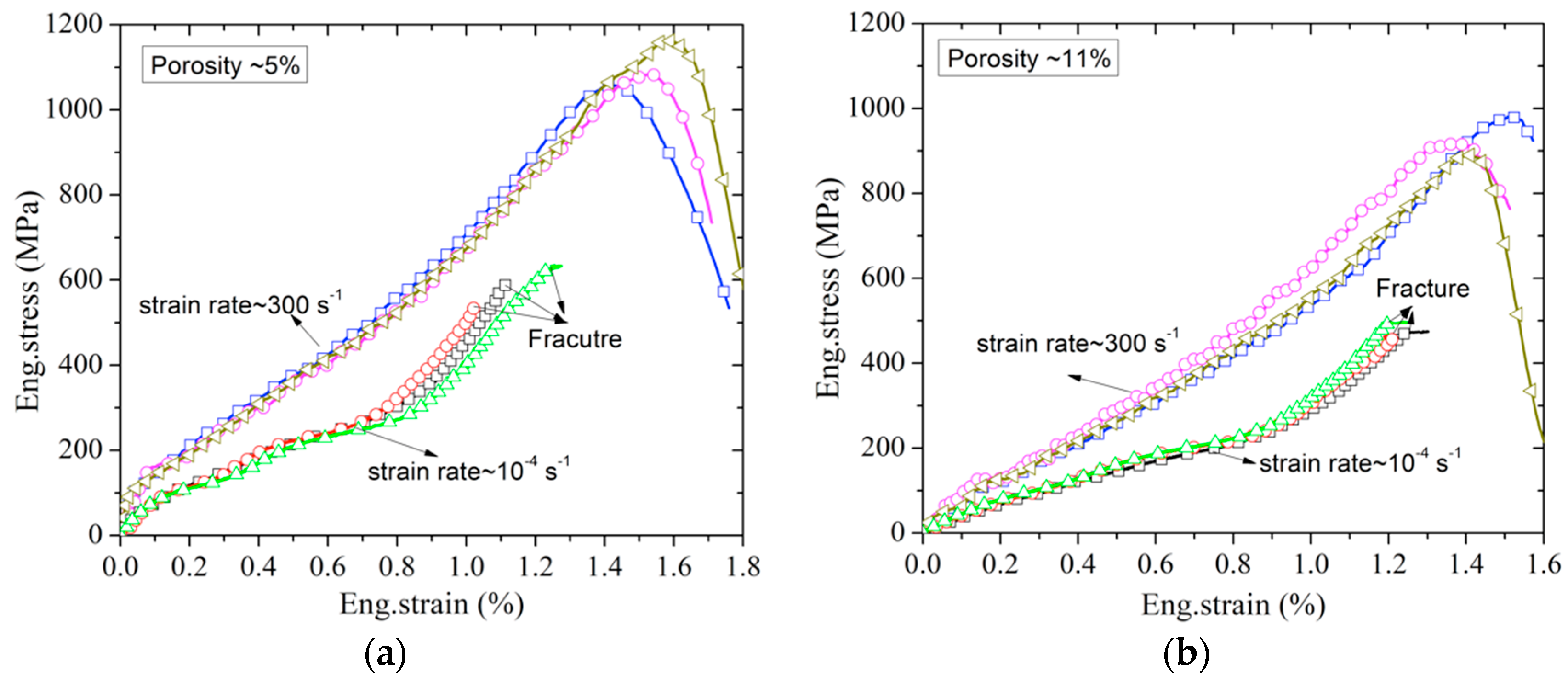

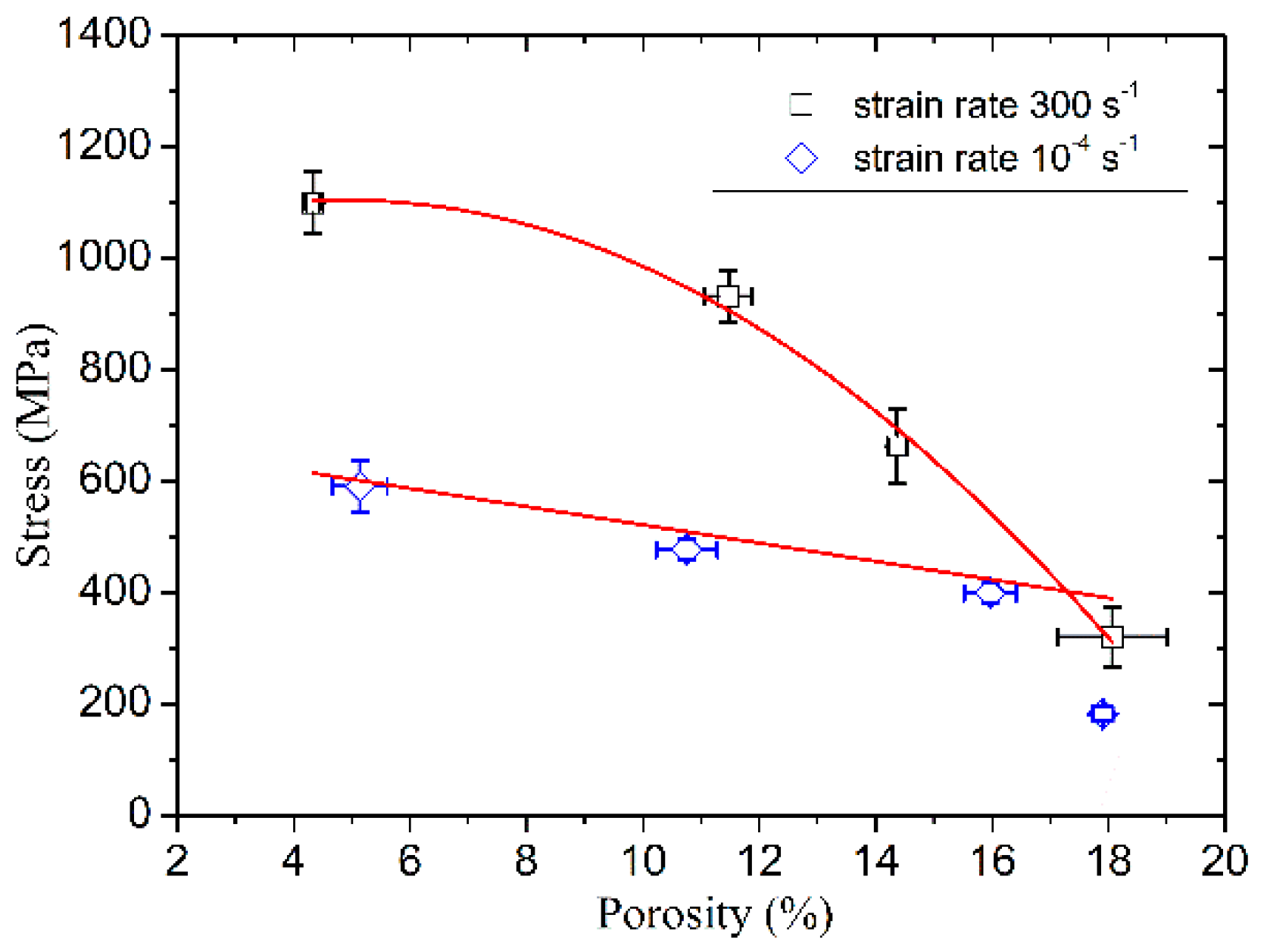
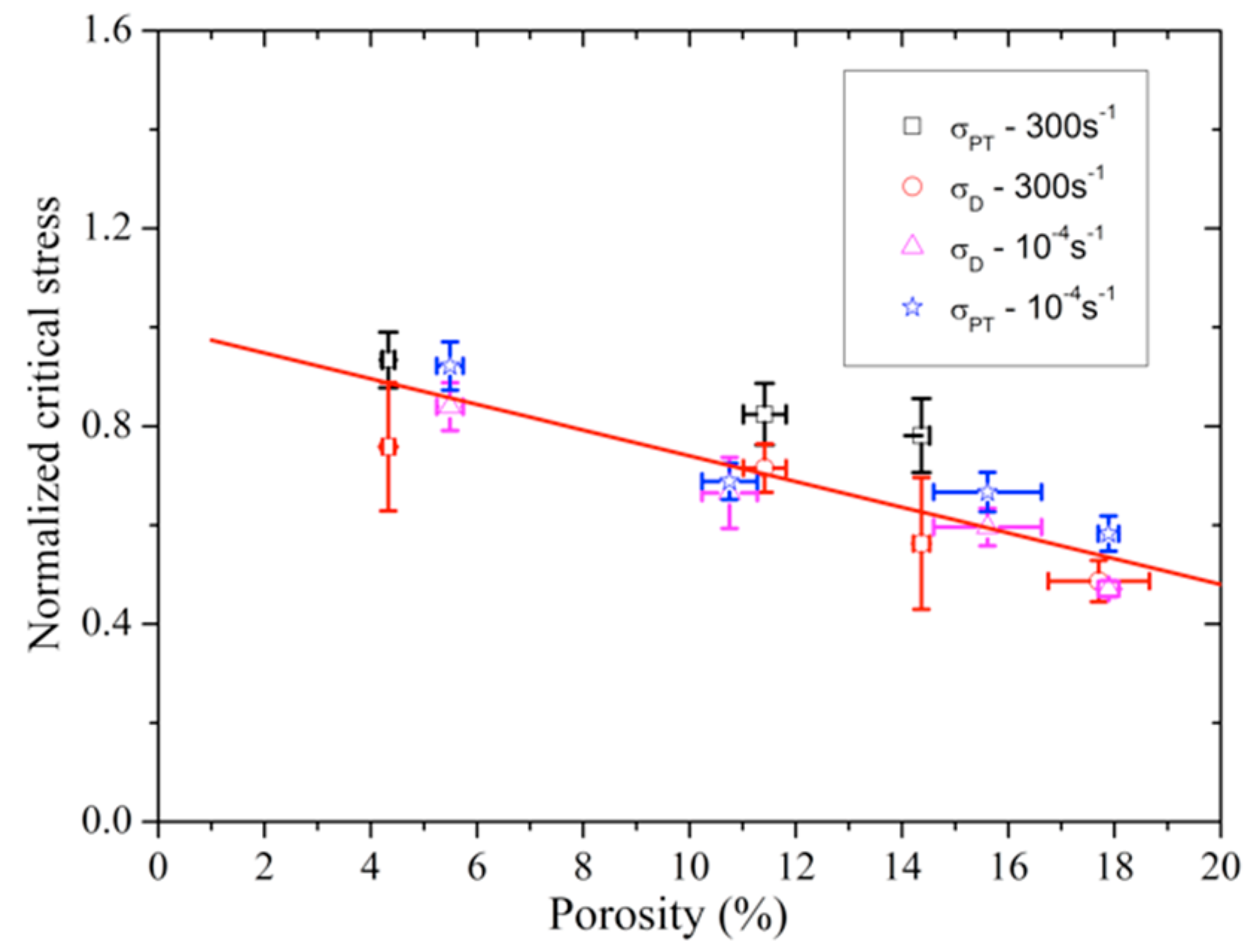
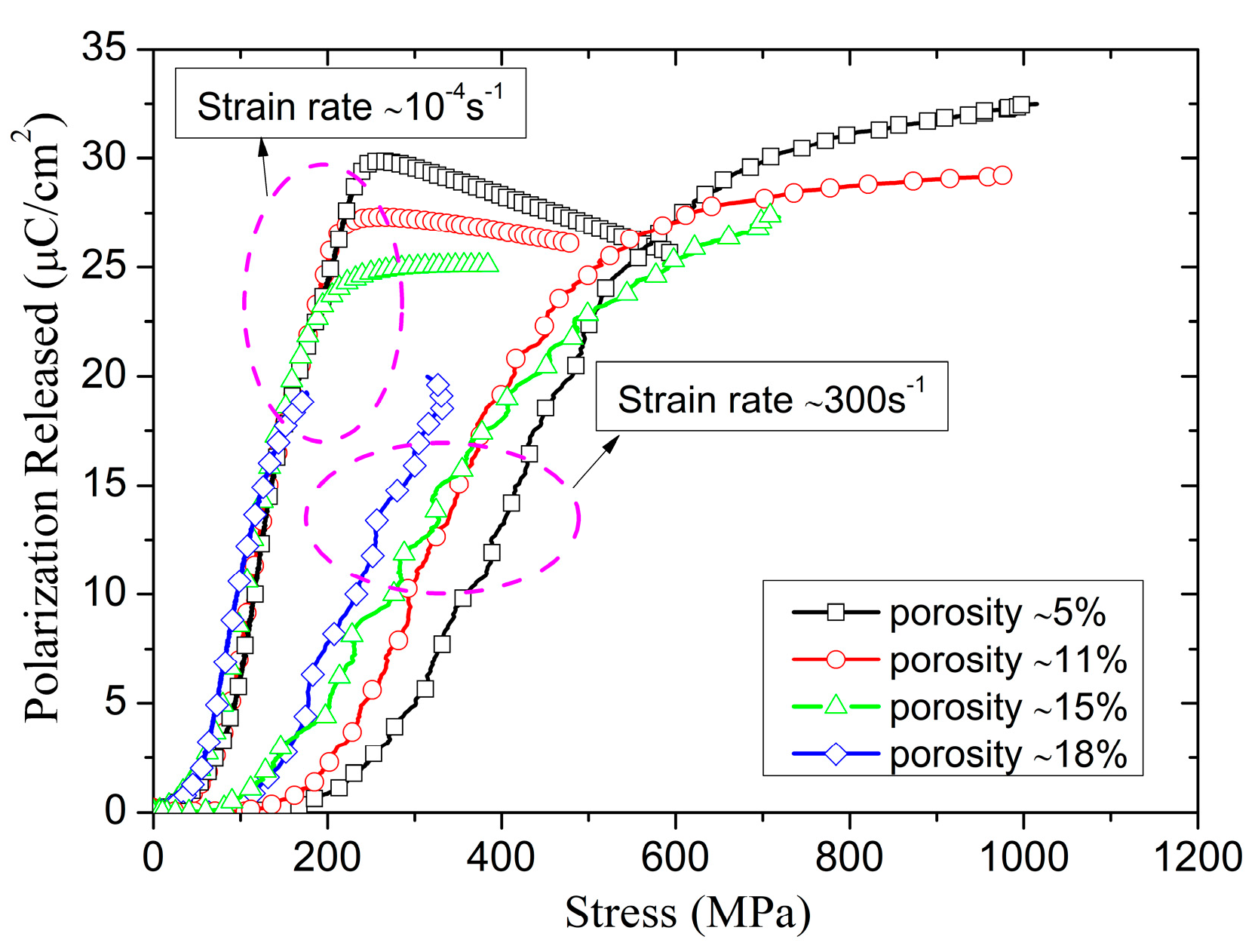

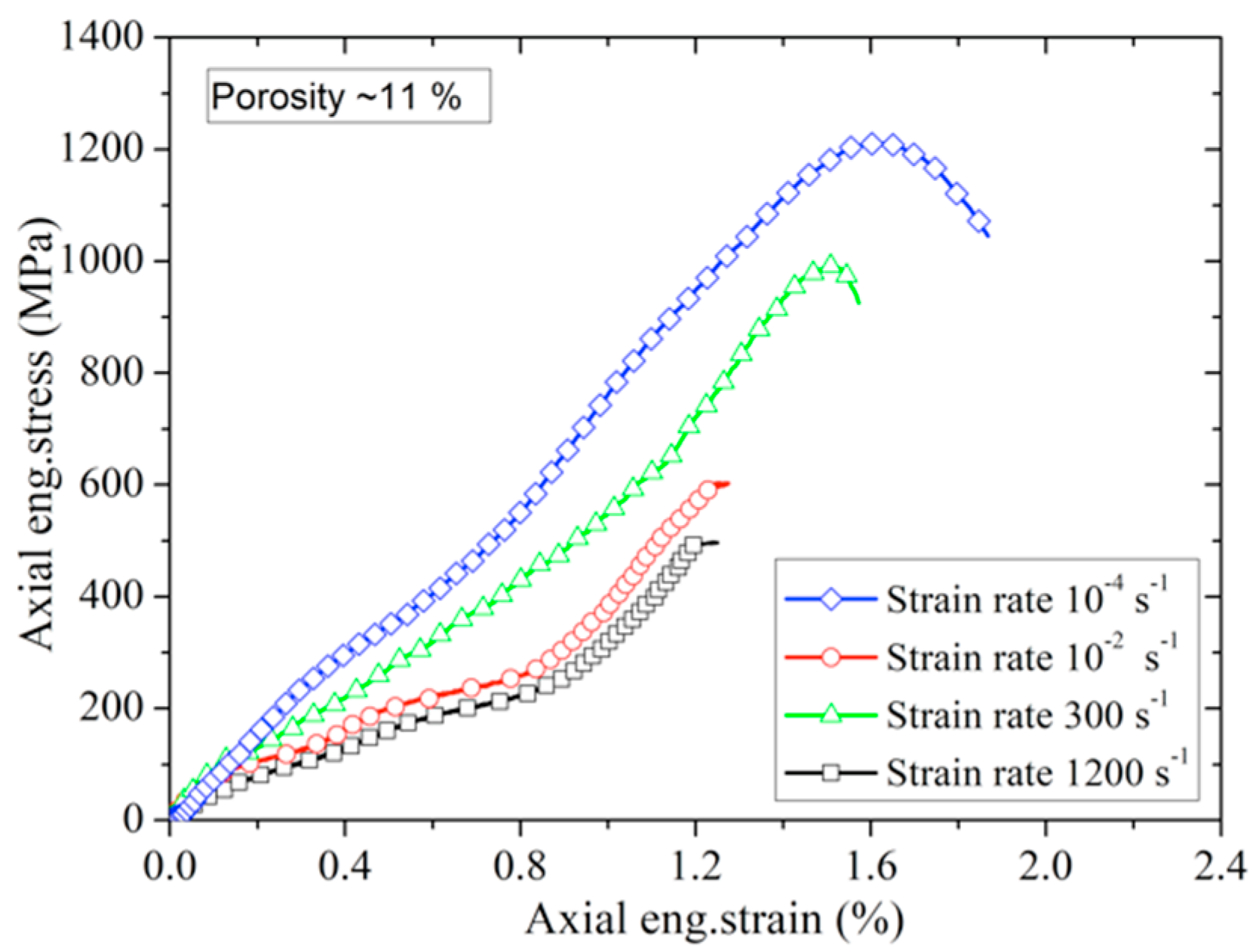
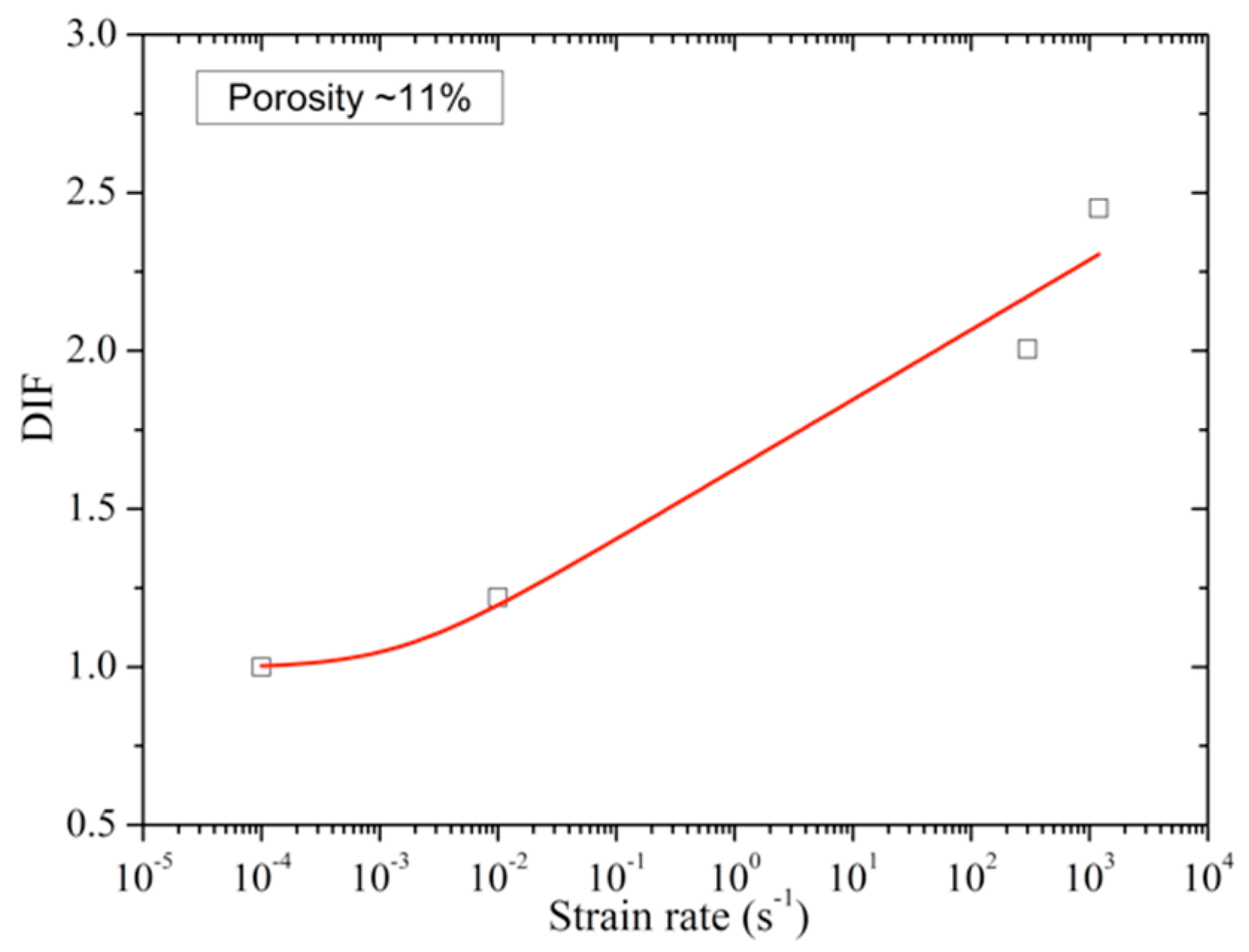


| PMMA (wt %) | Density (g/cm3) | Porosity (%) |
|---|---|---|
| 0 | 7.61 | ≈5 |
| 1 | 7.13 | ≈11 |
| 2 | 6.81 | ≈15 |
| 3 | 6.49 | ≈18 |
Publisher’s Note: MDPI stays neutral with regard to jurisdictional claims in published maps and institutional affiliations. |
© 2020 by the authors. Licensee MDPI, Basel, Switzerland. This article is an open access article distributed under the terms and conditions of the Creative Commons Attribution (CC BY) license (http://creativecommons.org/licenses/by/4.0/).
Share and Cite
Jiang, Z.; Gao, G.; Wang, X.; Wang, Y. Strain Rate and Porosity Effect on Mechanical Characteristics and Depolarization of Porous Poled PZT95/5 Ceramics. Materials 2020, 13, 4730. https://doi.org/10.3390/ma13214730
Jiang Z, Gao G, Wang X, Wang Y. Strain Rate and Porosity Effect on Mechanical Characteristics and Depolarization of Porous Poled PZT95/5 Ceramics. Materials. 2020; 13(21):4730. https://doi.org/10.3390/ma13214730
Chicago/Turabian StyleJiang, Zhaoxiu, Guangfa Gao, Xiaofeng Wang, and Yonggang Wang. 2020. "Strain Rate and Porosity Effect on Mechanical Characteristics and Depolarization of Porous Poled PZT95/5 Ceramics" Materials 13, no. 21: 4730. https://doi.org/10.3390/ma13214730
APA StyleJiang, Z., Gao, G., Wang, X., & Wang, Y. (2020). Strain Rate and Porosity Effect on Mechanical Characteristics and Depolarization of Porous Poled PZT95/5 Ceramics. Materials, 13(21), 4730. https://doi.org/10.3390/ma13214730





